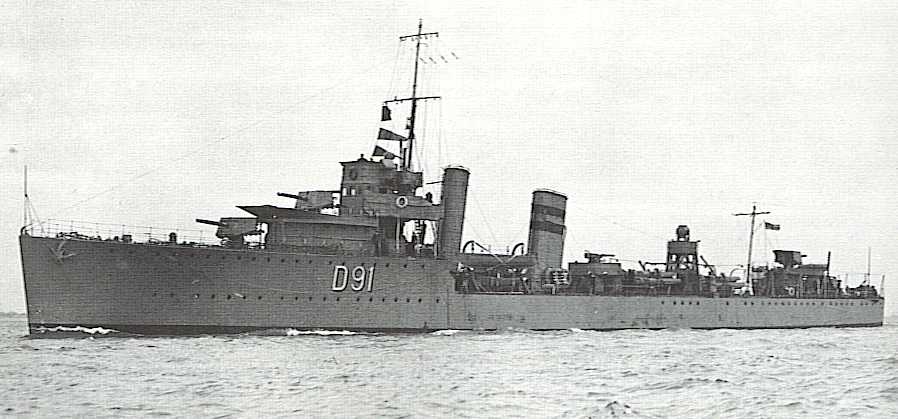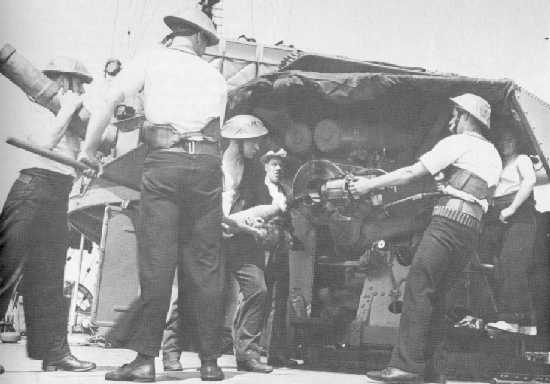|
The mountings for these guns can be distinguished from later 4.7" (12 cm) QF mountings by their abbreviated shields, which offered little protection to their gun crews' legs. These open-back gun mounts with their lack of integral hoists and low maximum elevations formed the pattern for the main guns used on nearly all British destroyers for the next three decades. By 1940, many of these weapons were wearing out and the ones that remained were almost all mounted on obsolescent warships. Rather than simply replacing these worn-out Mark I guns with a different, already available weapon, the British instead wasted scarce resources to design and manufacture a new, direct replacement gun of modern construction techniques, the Mark II. I can think of no better illustration of just how low a priority the Royal Navy assigned to ordnance standardization prior to the 1950s. Mark I was constructed of a tapered inner A tube, A tube, full length wire and a full length jacket. Mark I* was the same with no inner A tube. Mark II had a monobloc barrel, breech ring and breech bush. All of these were interchangeable and used a Welin breech block with a Vickers mechanism. A total of 187 Mark I and Mark I* guns were completed out of 776 ordered during World War I. Of these, 176 were available in 1939. 32 Mark II guns were ordered in 1940 and all were completed during the war. The 4.7" (12 cm) caliber was used on almost every destroyer built by Britain between 1917 and 1943. Actual bore diameter of all British 4.7" guns was 4.724" (12 cm). |

HMS Viceroy, a Thornycroft "special" V
and W class Destroyer
|

Bow gun on HMS Whitshed about 1942
|